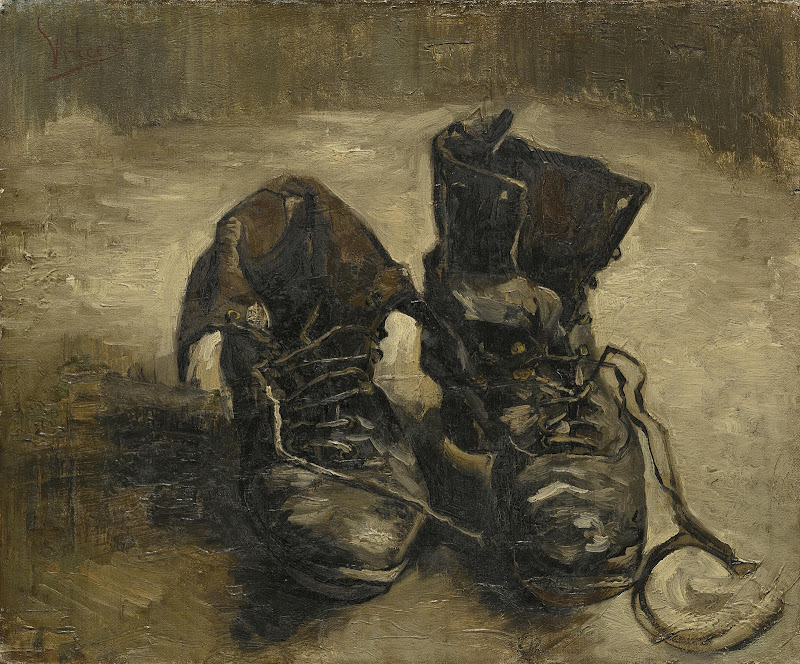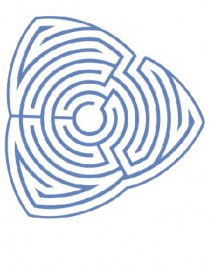Todo es mentira, ya verás
La poesía es la única verdad
Sacar belleza de este caos es virtud
– G.A. CERATI, Deja Vu
It has been said that the wisdom of the Hispanic peoples is not to be found in its academic prose but in its literature. In this essay, I’ll attempt to show the philosophical significance of the art of the Spanish Golden Age. Chance (or causality, the Spirit) has willed it so that, centuries before Kant, Nietzsche, or Vaihinger, Cervantes would discover that truth is to be found nowhere but in fiction. However, we need to take a detour through the abstract, through the Germanic, if we want to speak in philosophical prose about art.
We thus need to speak about Heidegger and his metaphysical aesthetics. Against the idea of beauty for beauty’s sake, Heidegger argues that what art is concerned with is truth. This is expressed in the formula “art is the becoming and happening of truth”. In order to understand this claim, we need to remember his distinction between truth as reference and truth as unconcealment (Aletheia). Truth in the former sense is the one we deal with in science and in our practical assertions about the world. A proposition such as “a computer monitor is on the desk” can be either true or false. However, this truth is derived from a more original form. Truth as Aletheia refers to the deeper phenomenon of the creation of meaning and distribution of value on top of the yet-to-be-conceptualized world, that is, the noumenic or what Heidegger calls Earth. Before we categorize our surroundings in objects in order for them to be studied by different sciences, we always find ourselves already in a World. Heidegger argues that this World is founded or created by the work of art. Yet, this idea of art as creating Worlds may seem at a first glance in complete opposition to modern art. We may concede that primitive art “founded Worlds” in as much as it consolidated an ethnopolitical sense of belonging for a certain community. However, in our times where globalization and the spread of western culture erases the localisms of historical peoples, is Heidegger offering nothing but an apologetic of Goebbels’s propaganda?
In this sense we can understand the example of the Greek temple that is provided in The Origin of the Work of Art. Initially, Heidegger’s theory seems to be only adequate to understand the monuments and myths of the cultures of the past. Art’s power would be the edification of a World in the sense of a cosmovision; the establishing of a way of seeing and approaching things that makes some elements sacred, others irrelevant, others mere means to survive. If this is so, then the concept of a World seems to imply a primitivism: a tribal conception of art that would make out of it nothing but the physical and tangible fundament of the organization of a community. Heidegger would have then failed to establish art as a medullar phenomenon in all human societies; his theory would imply nothing but a subordination of art to politics.
However, Heidegger provides us with another example which, by its very nature, does not lend itself to such a vulgar reduction: the art of Van Gogh. We are told that one of his paintings (one of the many pictures of shoes that the artist made) that it not only reveals us a World (the one of the country woman to whom the shoes belong) but that it also reveals us a philosophical concept: that of “equipment” (defined as that which is manufactured expressly for its use and usage. This philosophical concept is the one Heidegger proposes in Being and Time as the one needed to replace that of the “object” so widespread in modern philosophy). At this point, we seem to be facing a contradiction. On the one hand, art would be something like the origin of all particularities in the form of the Worlds of historical peoples. On the other, art would be assigned the characteristics of a universal discourse on the nature of both itself and being in general. How is it possible to put in consonance this two ways of understanding art as “the happening and becoming of truth”?

The key is in Heidegger’s noumenon, the Earth. Heidegger defines Earth as that which “always closes itself and therefore welcomes and receives in its inside”, as that on top of which the World is founded; as that which is raised by the World. He speaks about an “essential struggle” between Earth and World which is instigated by the work and which is the very essence of the work of art. The Earth is thus what is but is not World. Given the World is by definition all that is, we can say Earth is nothingness. Yet, like Heidegger said in his infamous phrase, “nothingness itself nothings”, which is to say that nothingness does things, it’s active. Then, this Earth is the inexhaustible source of being from which the being-that-reflects-on-its-being (Dasein) rises a World. Earth escapes the human attempts to achieve a stable knowledge about it. What the Greek temple and Van Gogh’s painting have in common is their power to “bring here the Earth”, that is to say, extract something from the darkness of that which escapes the limits of what humans can know within their plexus of meaning (World) and bring it to the light of what can be known by us. The temple is limited to founding the historical people of the Greeks while the painting, with its technique that favors the expressiveness of broad brushstrokes to the definition of realist lines, expresses the constant essential struggle between Earth and World. The shoes of the painting enable us to know the world of the countrywoman but if we focus on the background (I suggest you experiment this yourself) we can make out gestalt images that disappear as soon as we try to retain them, just as the Earth escapes the human attempts of conceptual stabilization. The “rising of a World by the temple” doesn’t lack this essential struggle which is the essence of the work of art. The difference resides in that the great art of our times enables us to know this structure of being. However, the shoes that Van Gogh painted were his very own. The World that the painting reveals is not that of the peasant woman as Heidegger wanted but that of the artist, that to whom the World needs to be constantly expressed and re-expressed.
Heidegger’s text only insinuates this idea of a transcendental art, that is, in Kantian terminology, an art that turns towards itself and reflects upon the very conditions of its own possibility. An art that is not only the metaphysical engine of the production of meaning, the origin of our fundamental preconceptions at the moment of facing our surroundings, but an art that at the same time reveals us the fundamental structures of both itself and being in general. This art is no longer the Mayan serpent who was there at the birth of the cosmos and bears witness to it. After Kant proved that such a beginning of the World is but a human fiction, an illusion, transcendental art bears witness to the moment of its own production as a more fundamental and essential moment: Las Meninas by Velazquez.

Borges, who can arguably be considered the most important philosopher to have written in Spanish, wrote a story called The Library of Babel which can be read as a parody of the history of metaphysics. The story begins: “The universe (which others call the Library) is composed of an indefinite and perhaps infinite number of hexagonal galleries…”. This vast library holds a seemingly infinite number of non-sensical books. We are presented with the librarians’ futile attempts to make sense out of them which mirrors the philosophical attempts to make sense out of our own universe. Only one theory succeeds in revealing the secret of the library: the “capital fact of history” is the realization that the library is the result of the exhaustive combination of 23 characters. Is there an analogy of this realization in regard to our own universe? I believe that the fundamental intuitions of Velazquez and Cervantes can be deemed as such. Velazquez’s mirrors and Cervantes’s Quixote allow us to face the absurd that is as inherent to our world as it is to Borges’s library. This absurd cannot be overcome but their reflexive art allows us to become conscious of the essential and constant human activity consisting of making sense out of chaos, of poetizing reality (poiesis derives from the Greek word for “creation”).
The birth of the modern novel in Cervantes’s Quixote offers us the naked Earth in the form of La Mancha, the most irrelevant, most empty, place of all of Spain. There, a noble gentleman embarks in an impossible task: to imitate the knights of the stories that consumed his good sense. The problem is that the World is no longer that of the books; the institution of knights-errant is lost, the World is disenchanted. This way, Quixote confronts himself face to face with nothingness itself, with the Earth. He charges against windmills that appear to him as giants and sees princesses in mere peasant women. Every time he is asked about his lack of sense, he answers the same thing: reality has been altered by magicians who don’t want his feats to be recognized. The Quixote presents us with a new Odyssey in which the hero faces the void of meaning of his time. This is a true poet-hero who literally takes upon his very shoulders the essential struggle which according to Heidegger is the essence of the work of art. Quixote, mounted on Rocinante, poetizes reality as he crosses through Spain, simultaneously inhabiting and creating the world where he fights.
It has been said that in antiquity gnoseology was subordinated to metaphysics and that in modernity gnoseology had the ontological priority. Aristotle does not set out to study the soul before having established his metaphysics: we need to know what we are talking about when we say “what”, the substance, before asking “what is the soul?”. Descartes, on the contrary, does not see how it is possible to know anything if we don’t know what knowing itself is and how we should employ our cognitive faculties to achieve it. In our times, with such philosophers as Heidegger or Nietzsche, aesthetics prevails over gnoseology and metaphysics. It’s about art, maybe as the most original and primitive way of knowing, as that which articulates and exteriorizes the World, about what we must ask if we want to answer the most fundamental questions of philosophy. The Quixote is the “capital fact of history” because it is in its pages where art assumes itself consequently as fiction for the first time and where art is thus dispensed with the need to serve the religious or political dogma. When art has nothing to serve but itself, it offers us the pure struggle of pulling out beauty from utter chaos, of poetizing the real.


Pingback: Transcendental Cinema, 1: When the Camera Turns Upon Itself | Blue Labyrinths